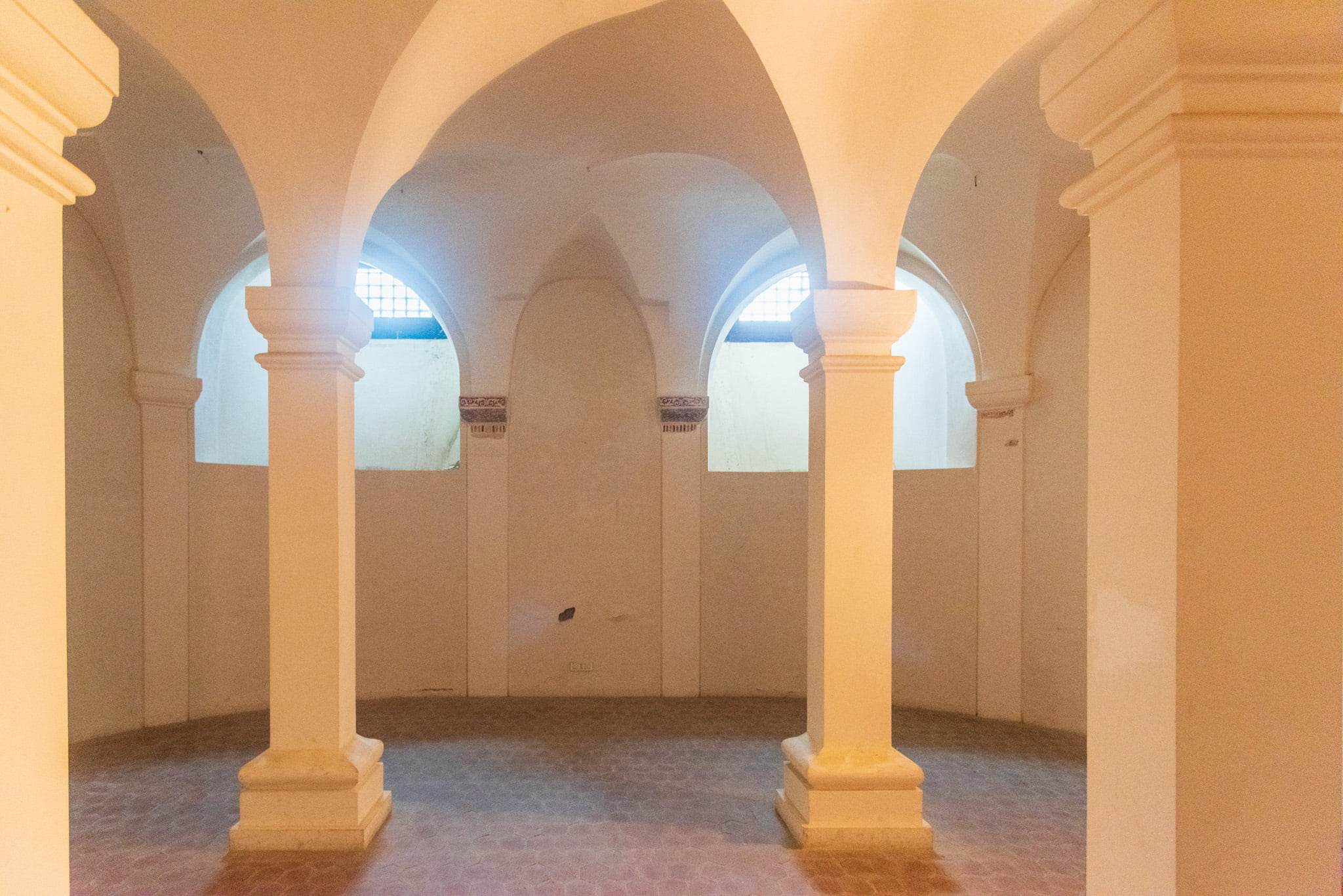The Old Cathedral was built starting in 1608, replacing the previous church of St. Mary, on the esplanade where four churches and three civil buildings stood. The Cathedral was completed in the second half of the 17th century. During the 18th century, other works were carried out, such as the new sacristy (completed in 1704). The Cathedral was initially dedicated to St. Mary of the Assumption, in 1678 it was dedicated to St. Stephen, the patron saint of Milazzo.

Old Cathedral
Façade - The main façade, of late 16th-century style, is characterised by Syracusan stone pilasters with composite and Corinthian capitals, and is divided into two orders by a cornice. In the first order, two Corinthian half-columns support a broken tympanum that makes room for a shrine with a statue of the Madonna and Child flanked by two Mannerist angels. The second order is dominated by a rectangular window with a zodiac and sundial on either side. The crowning of the upper part lacks the belfry, which collapsed in the early 1900s. The roof features a central dome with a thin drum and four side domes.
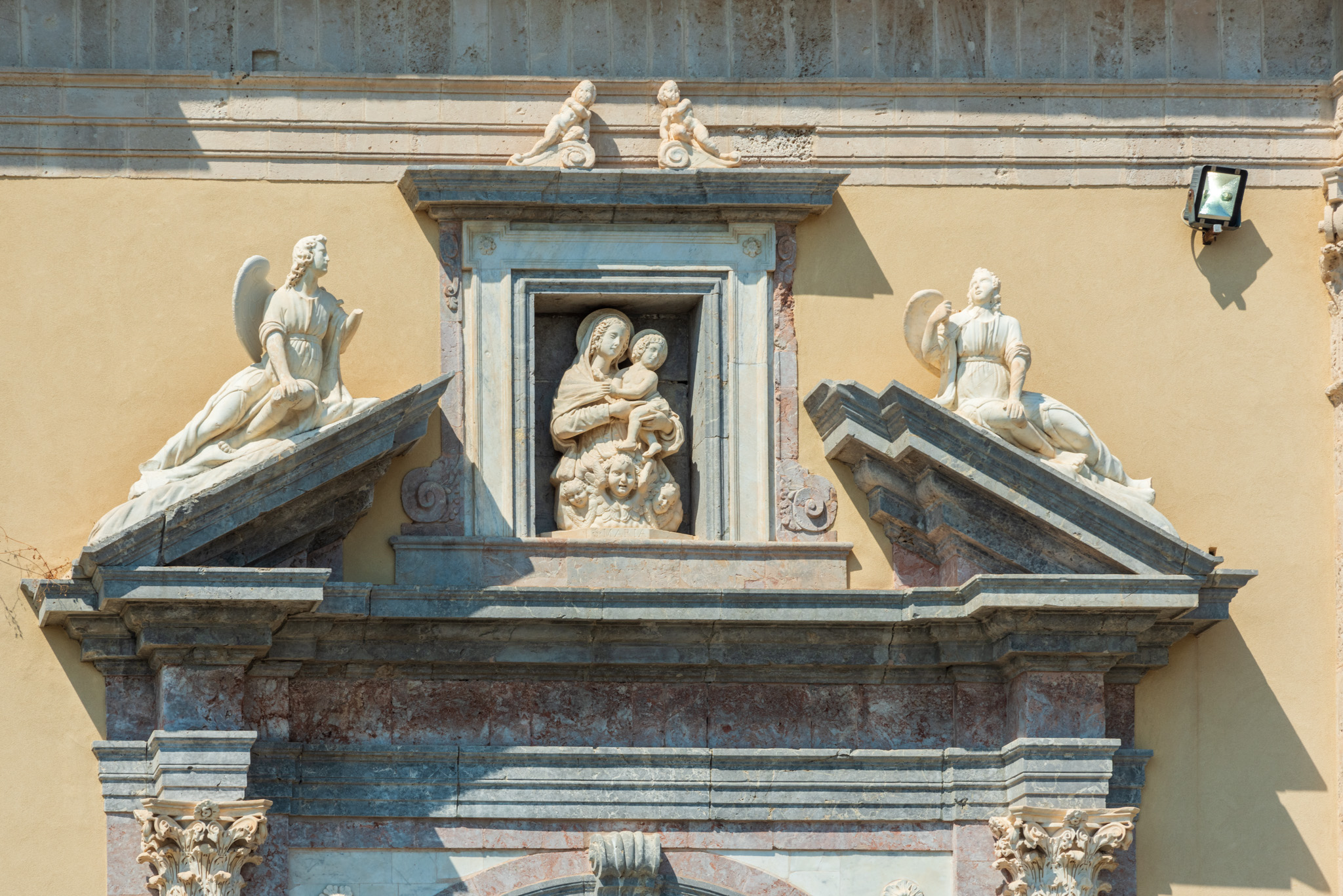
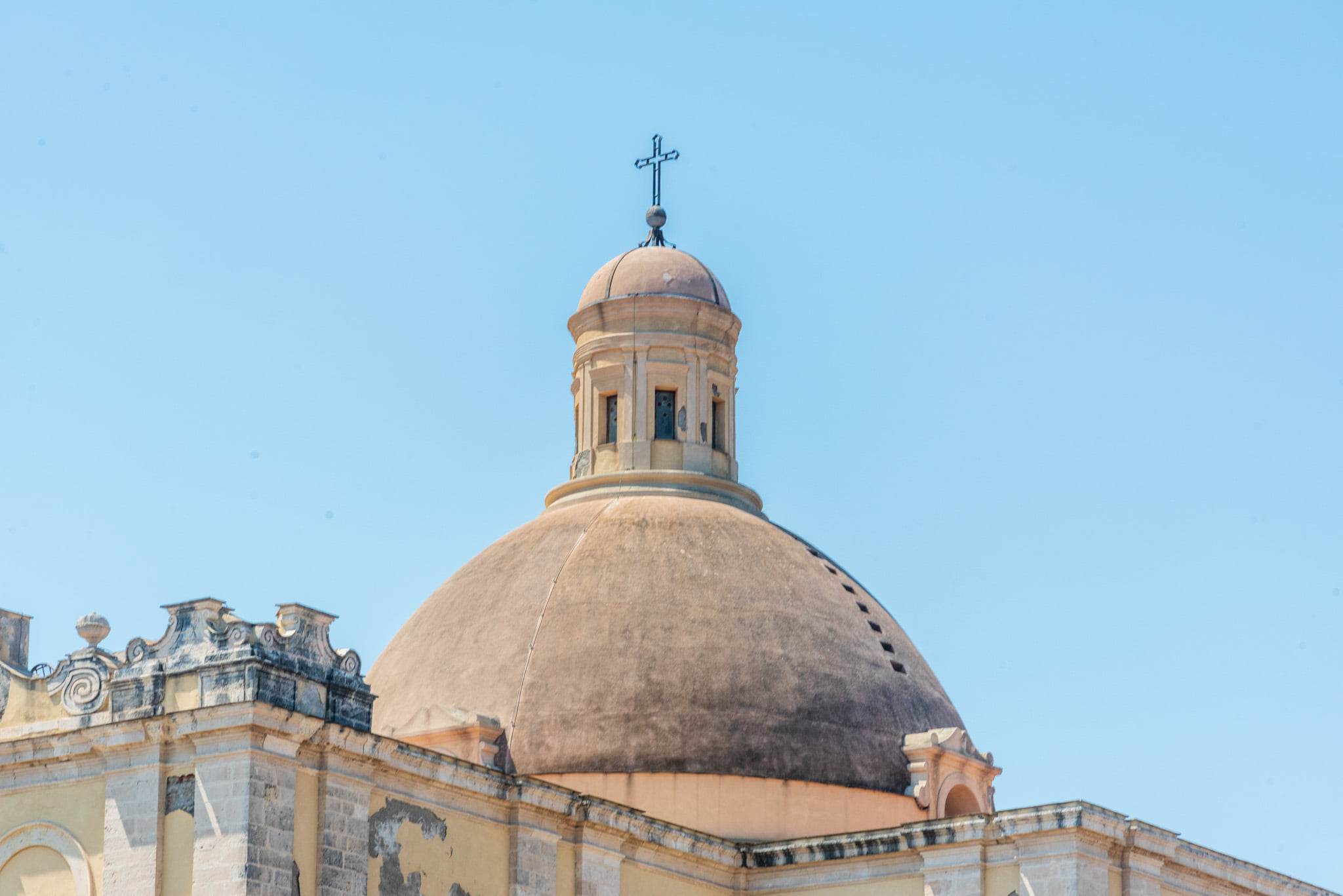
The domes - The main dome: there are four round windows at the base and it ends in a lantern. Inside, it is articulated in sails. In the panels separating the 4 round windows are three figures that were probably part of a group of 4 saints (St. Leo II, St. Demetrius, St. Nicholas, St. Papinus). The 4 side domes echo the sail-like articulation of the main dome.
Altar of the Crucifix - It is framed in a large arch; the wall has an inlaid decoration on which the imprint of a crucifix is clearly visible.
Altar of the Crucifix - It is framed in a large arch; the wall has an inlaid decoration on which the imprint of a crucifix is clearly visible.
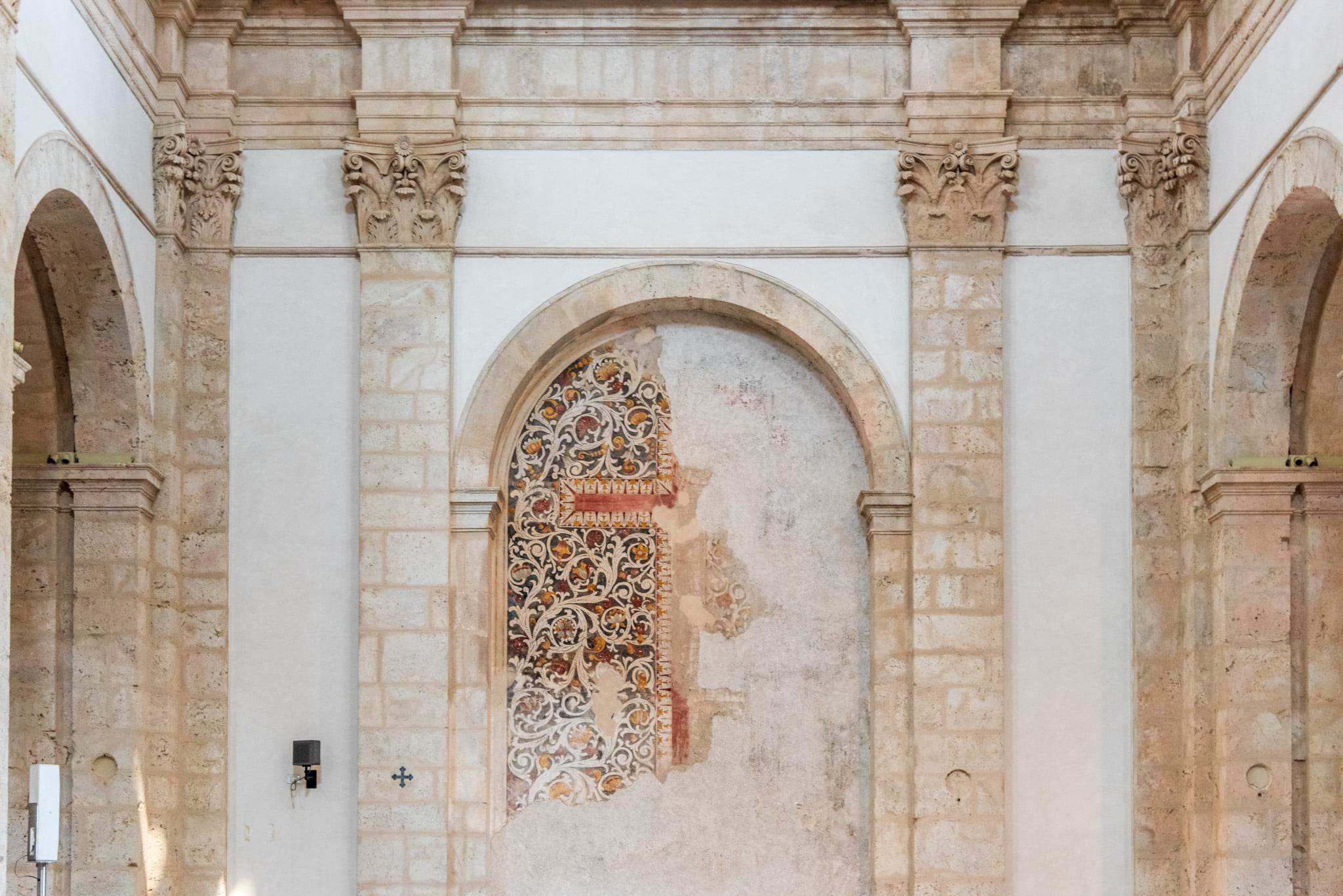

Apse of Our Lady of Grace - The altar is no longer present, but the original white and grey marble rhombus floor remains; on the walls, inlaid marble pilasters, in the arch the civic coat of arms and the Virgin's monogram.
Choir - The room, once decorated with wooden stalls and now completely empty, has four side doors, the first two with marble decorations, of the other two, the one on the left leads to the sacristy, the one on the right to the rooms below. Originally, the space was occupied by the high altar, the pulpit and paintings on the side walls.


Altar of St Stephen - Inlaid marble altar, in whose antependium is a medallion depicting the saint; at the top, the altar is surmounted by two Carrara marble angels. On the highest part is an oval representing three superimposed crowns symbolising the three feudal orders:
⁃ At the bottom the demanial or civic order proper to the royal city;
⁃ In the middle the feudal or baronial one;
⁃ At the top, surmounted by a cross, that of ecclesiastical power.
Apse of the Blessed Sacrament - The marble tabernacle with angels is remarkable; the side walls have two windows with inlaid marble frames. In the arch the civic coat of arms and the Holy Host.
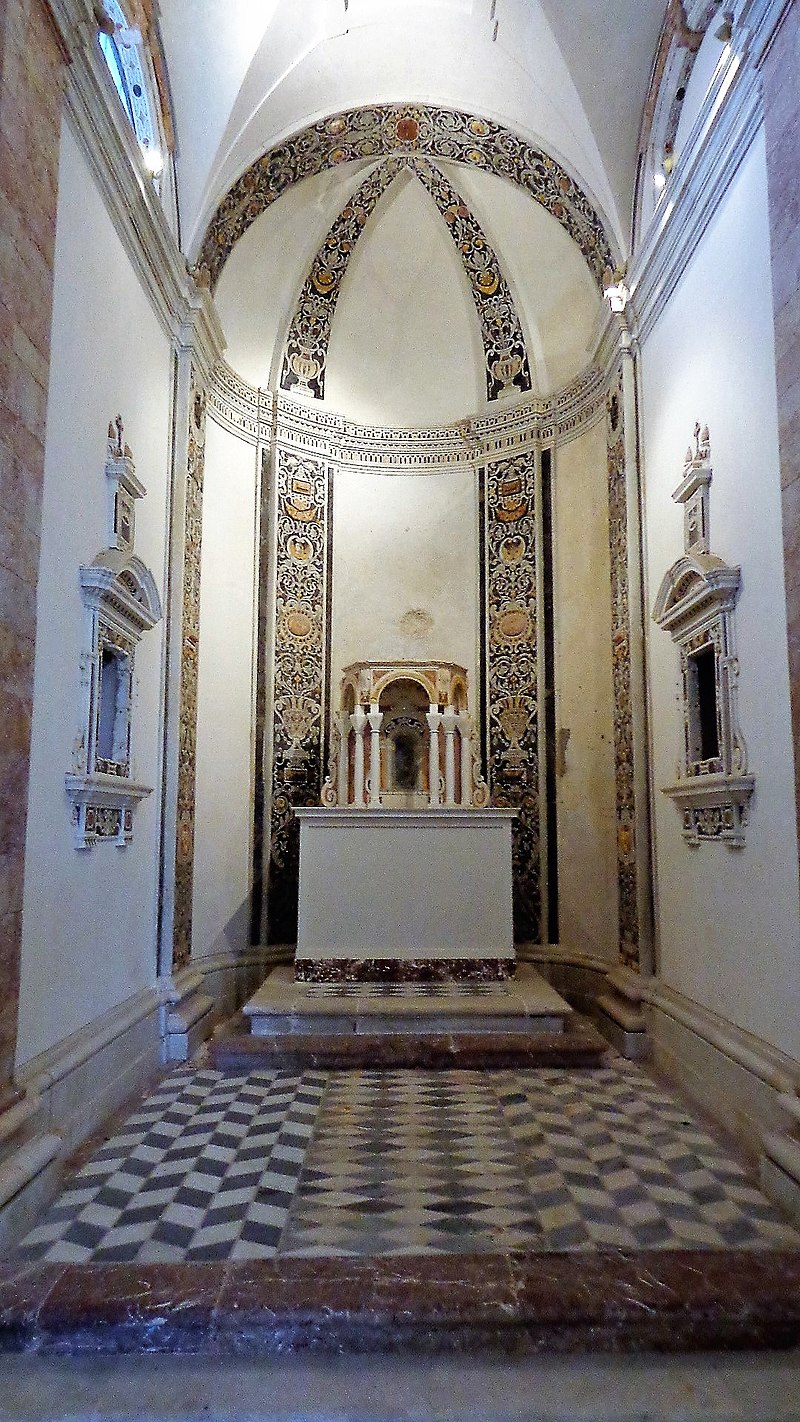

Inside the shrine was a painting depicting the 'Martyrdom of St Stephen', which is now in the New Cathedral. The fresco visible today, partly covered by the marble altar, depicts the 'Noli me tangere', the encounter between Jesus and Mary Magdalene, immediately after the Resurrection (only a hand and part of the robe of Christ is visible).
Sacristy - Work on this area of the Cathedral began in 1698 until 1704. There is a helicoidal stone staircase, once connected to the Oratory of the Blessed Sacrament (lower floor), while going up to the upper floors one could reach the roof, passing through other rooms. Note the 18th-century polychrome marble basin and the large portal, surmounted by a commemorative plaque, leading to the 'New Sacristy'.
Oratory of the Holy Sacrament - Positioned under the choir, and a room covered by a low cross vault resting on four quadrangular pillars; on the walls another 10 half-pillars, on some of which the remains of the original decorations are still visible. In the thickness of the west wall there is an ogival niche intended to hold the hosts and in all probability there must also have been a wooden altar, which has been lost. The broken staircase led to the sacristy rooms. This area was used from 1616 to 1861 as the Oratory of the Archconfraternity of the Holy Sacrament, a lay company founded in 1580.
